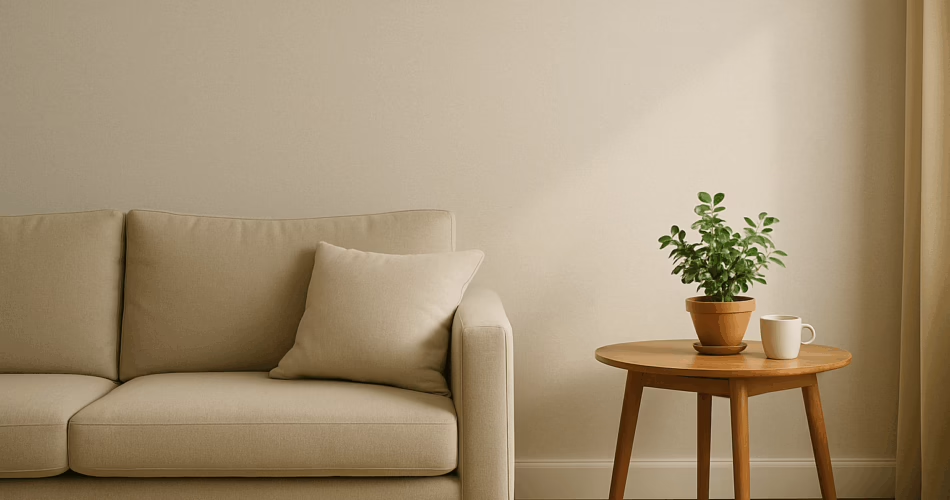Introduction
Minimalist wallpaper is quietly transforming how we think about home design. In a world overflowing with visual clutter and distractions, minimalist decor offers a breath of calm. And when it comes to reimagining your space without going overboard, minimalist wallpaper is a powerful, underappreciated tool.
Unlike bold prints or heavy textures, minimalist wallpaper works in subtle ways. Think muted tones, gentle lines, and textures that mimic nature—elements that don’t scream for attention but still change how a room feels. Whether you’re looking to soften a bedroom wall, add depth to a hallway, or bring cohesion to a home office, minimalist wallpaper does the job with grace.
Best of all, it’s one of the easiest design upgrades you can make. Peel-and-stick options mean no paste, no mess, and no long-term commitment. It’s perfect for both renters and homeowners who want to shift a room’s energy without a full-scale renovation.
Minimalist wallpaper blends form and function. It lets your furniture, lighting, and personal items shine—without stealing the spotlight. And when chosen thoughtfully, it sets the tone for a space that feels open, balanced, and calm.
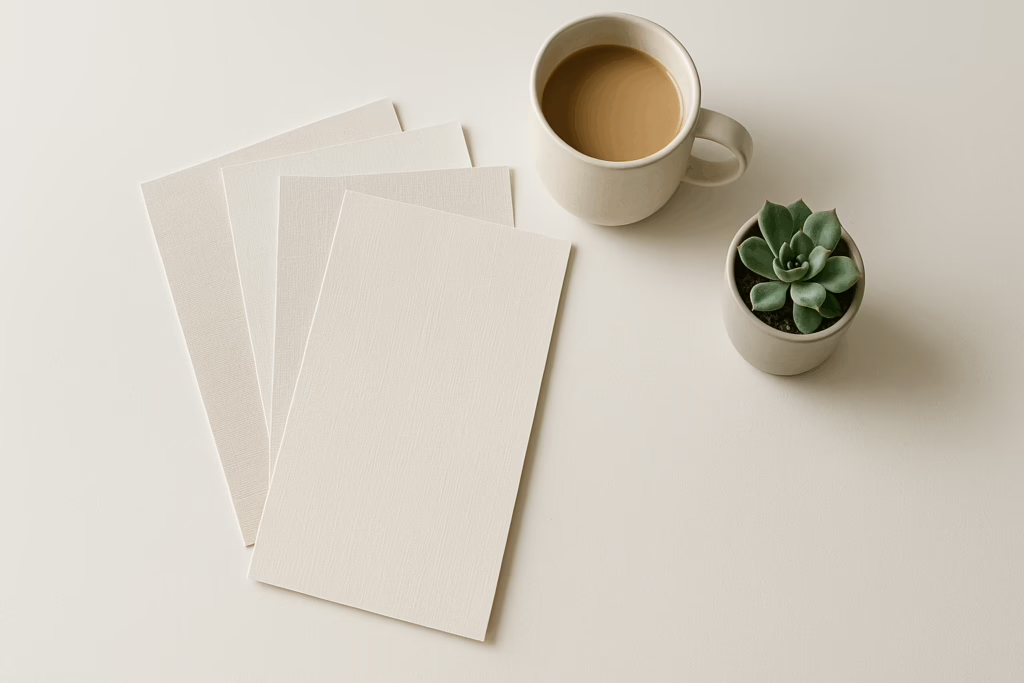
1. What Is Minimalist Wallpaper?
Minimalist wallpaper is a design solution that embraces simplicity. It uses clean lines, soft tones, and subtle patterns to create a sense of calm and order. Unlike traditional wallpapers that often feature bold florals, busy prints, or loud colors, minimalist wallpaper favors restraint.
You’ll find it in neutral shades like off-white, beige, charcoal, or soft gray. Some feature barely-there geometric shapes or delicate textures that catch light differently throughout the day. The beauty lies in the understatement—it adds depth without distraction.
One of the key traits of minimalist wallpaper is its focus on texture over print. Grasscloth, linen weave, faux plaster, and wood grain are common finishes. These textures bring a tactile quality to your walls without overwhelming the senses.
Minimalist wallpapers are often peel-and-stick or removable vinyl options, making them perfect for people who want to avoid the permanence of traditional wall treatments. Eco-friendly materials are also becoming more common, with wallpapers made from recycled fibers or printed with non-toxic inks.
In short, minimalist wallpaper is for people who want their walls to whisper, not shout. It’s a quiet, intentional design choice that elevates a room while maintaining the clarity and calm that minimalism promises.
For inspiration, check out Livette’s Wallpapers or Etsy’s minimalist wallpaper section, where independent creators offer unique, modern options.
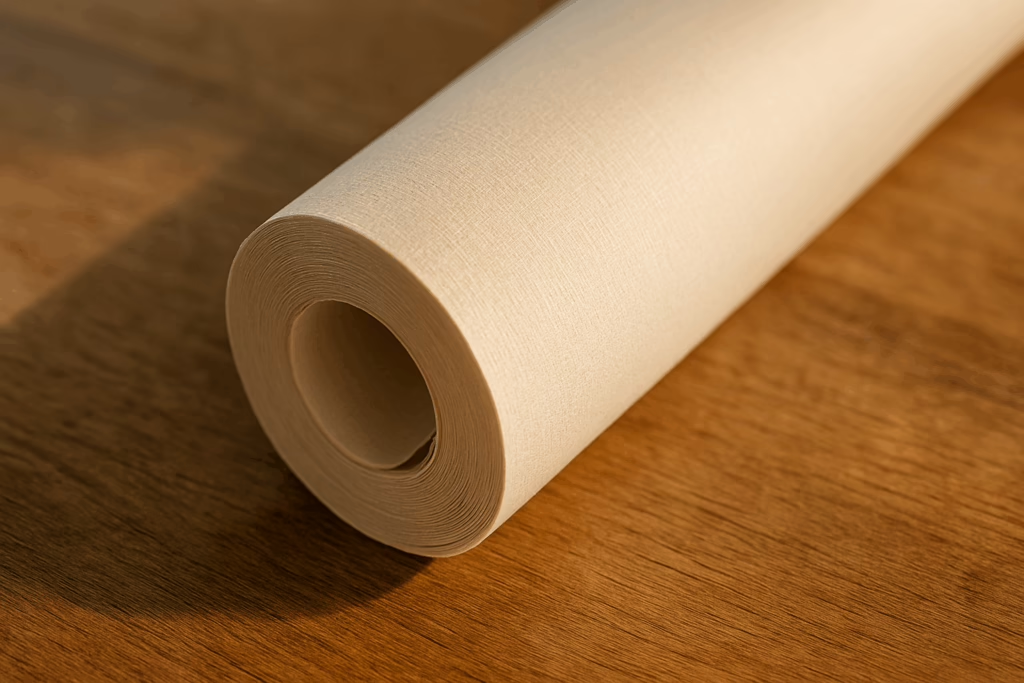
2. Why Choose Minimalist Wallpaper?
Minimalist wallpaper offers more than just a stylish backdrop—it creates space for peace. In rooms overwhelmed by bold décor or too many objects, walls can either add to the noise or help quiet it. Minimalist wallpaper does the latter.
One of the biggest reasons to choose minimalist wallpaper is its ability to create visual calm. A wall covered in soft tones or subtle textures can make a room feel larger, airier, and more restful. This effect isn’t just about aesthetics—it has a real impact on how we feel. A quieter visual environment can reduce stress and promote focus, especially in bedrooms, home offices, and meditation spaces.
Another advantage is flexibility. Minimalist wallpaper pairs well with almost any interior style—from Scandinavian and modern to boho and Japandi. That means you don’t have to overhaul your whole space to make it work. It complements rather than competes with your furniture, lighting, and artwork.
It’s also an ideal solution for renters or anyone hesitant about permanent design changes. With peel-and-stick options, you can transform a room in an afternoon without damaging the walls or losing your deposit. It’s low commitment with high reward.
Finally, minimalist wallpaper is perfect for people who want to experiment with design while keeping things simple. It lets you play with texture, depth, and light without filling your space with stuff. You get the satisfaction of a design refresh, minus the clutter.
To see how minimalist wallpaper can shift a room’s mood, browse options at Spoonflower or Amazon’s top-rated peel-and-stick wallpapers.
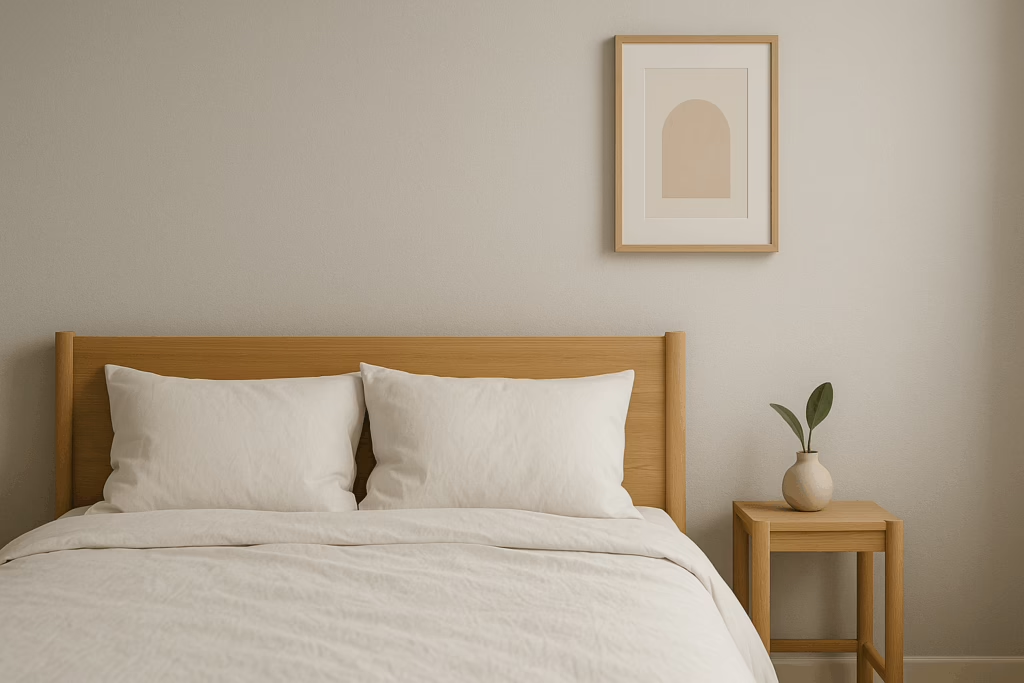
3. Choosing the Right Style for Your Space
Minimalist wallpaper isn’t one-size-fits-all. The right style depends on the room, lighting, and how you want the space to feel. It’s less about following trends and more about making subtle design choices that reflect your daily rhythm.
Start by considering how the room is used. A bedroom benefits from soft, calming tones like dove gray or warm sand, while a home office might call for more structure—perhaps a linear pattern or a subtle grid to encourage focus. Living rooms can handle a bit more texture or warmth, like faux plaster or linen prints, adding depth without visual clutter.
Lighting plays a big role, too. In darker spaces, go for lighter wallpapers with reflective textures to keep the room from feeling heavy. In bright rooms, consider matte finishes or natural textures to soften the light and reduce glare. Faux concrete, for instance, adds an urban edge without being harsh.
Read More..
- Beginner Minimalist? Here’s How Simplifying My Life Changed EverythingWhat Being a Beginner Minimalist Really Means Becoming a beginner minimalist isn’t about tossing all your belongings or living out of a suitcase. It’s about…
- 7 Life-Changing Truths About Minimalist Living That Gave Me My Life BackMinimalist Living: The Turning Point That Sparked It All For years, life felt like a constant race against clutter—both in my home and in my…
- 7 Tips : Minimalist Furniture, Maximum Peace: How a Clutter-Free Living Room Changed EverythingWhy a Minimalist Furniture Living Room Is More Than Just a Design Choice When someone first hears “minimalist furniture living room,” they might picture a…
Furniture style matters as well. If your space is already full of bold shapes or dark colors, choose wallpaper that’s ultra-neutral—think white-on-white textures or barely-there lines. If your furniture is minimalist too, you can afford to add a wallpaper with a gentle geometric pattern or a touch of organic movement.
Try samples before committing. Many wallpaper brands offer swatches so you can test how it looks in different lights and against your furnishings. A great resource for samples is Chasing Paper, which offers peel-and-stick options in a wide range of minimalist styles.
The goal is harmony. The right minimalist wallpaper doesn’t just fill a wall—it helps everything else in the room feel intentional.
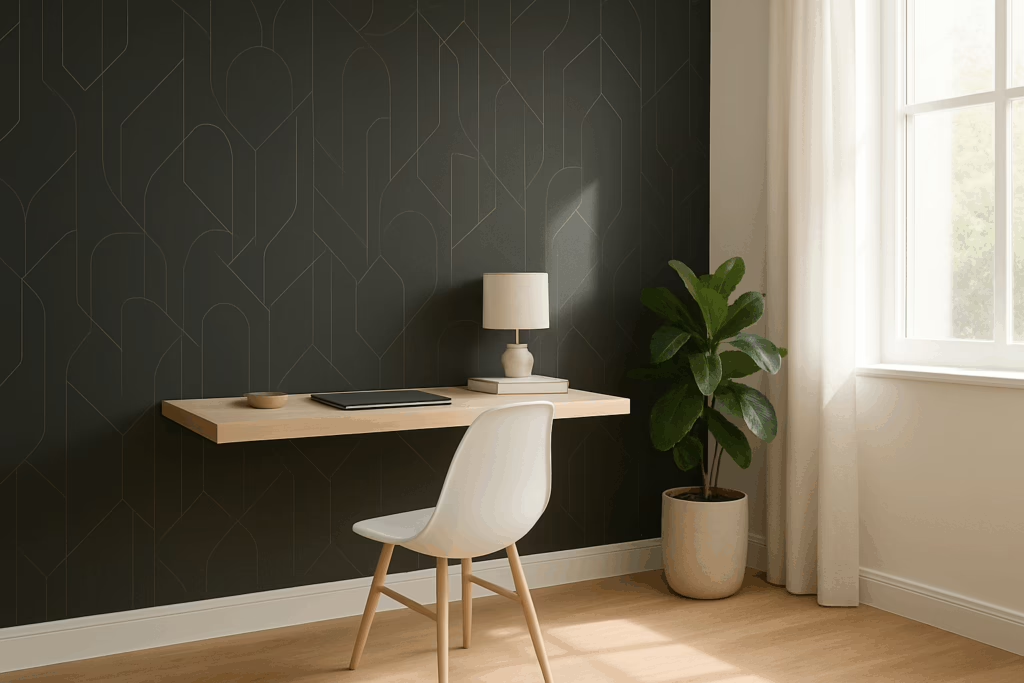
4. Application Tips: Doing It Right the First Time
Applying minimalist wallpaper doesn’t have to be intimidating. With the right prep and a bit of patience, you can achieve a seamless look that feels professional—without hiring one.
Start by prepping your wall. It should be clean, dry, and smooth. Remove any nails or hooks, fill in holes, and sand down bumps. Even the most subtle patterns on minimalist wallpaper can highlight imperfections underneath, so a flat surface is key.
Next, gather your tools. You’ll need a smoothing tool (like a plastic squeegee), a utility knife, a measuring tape, a level or plumb line, and possibly a step stool. For peel-and-stick wallpaper, you don’t need glue, but you’ll want to work slowly to avoid air bubbles and misalignment.
Begin at a corner or edge. Use a level to make sure your first strip is perfectly vertical—any errors here will throw off the entire wall. Peel the backing slowly, smoothing the paper as you go from the center outward. If bubbles form, lift and reposition gently.
Overlap or butt the seams depending on the wallpaper style. With some textured designs, a tiny overlap can help hide lines. Others are meant to meet edge to edge. Always check the manufacturer’s recommendation.
If you make a mistake, don’t panic. Removable wallpaper is forgiving. Carefully peel it back and realign. And if you’re installing traditional wallpaper, keep a damp sponge handy to smooth out paste or clean up excess.
For a helpful step-by-step video, check out this Beginner’s Wallpaper Guide by Livette’s.
Taking your time with the install ensures your minimalist wallpaper looks clean and intentional—just like the design itself.
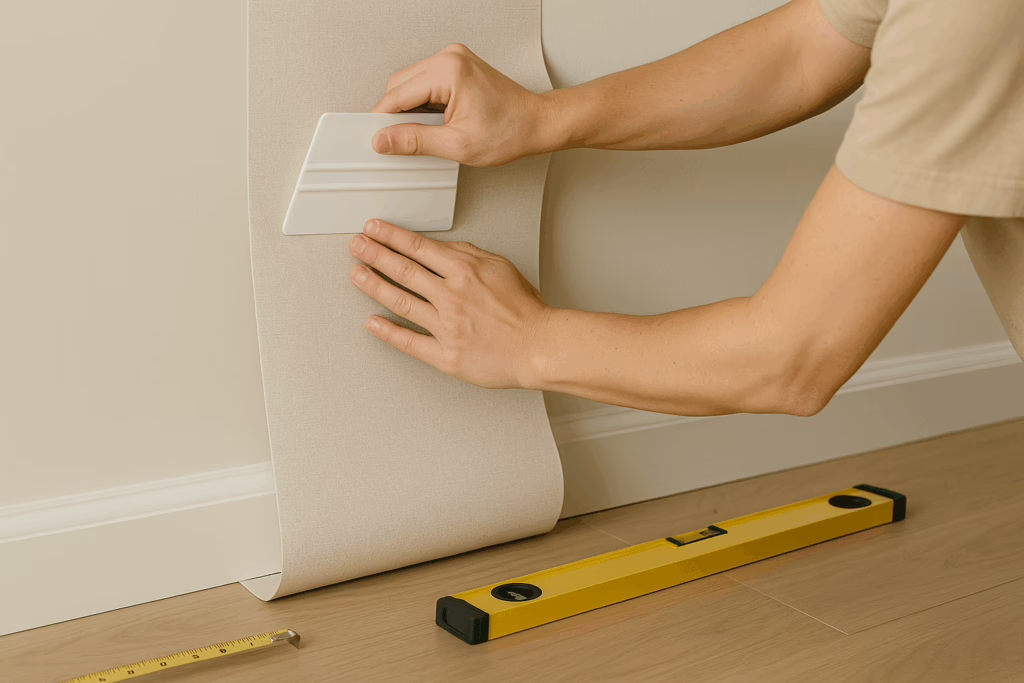
5. Where to Buy High-Quality Minimalist Wallpaper
Finding the right minimalist wallpaper means balancing quality, style, and ease of installation. Fortunately, there are several trusted retailers that specialize in clean, modern wallpaper designs for every budget and space.
Livette’s Wallpaper is a standout for high-end minimalist styles. Based in Europe, they offer eco-friendly, made-to-order options with soft textures, subtle patterns, and customizable colors. Their Minimalist Collection is ideal for anyone wanting understated elegance.
For handmade or bespoke designs, Etsy is a go-to. Shops like Wall Flora Studio and Betapet create peel-and-stick wallpapers in muted tones and simple line art. It’s a great place to support small makers while finding something unique. Start exploring Etsy’s minimalist wallpaper options here.
Spoonflower offers artist-designed wallpaper in both peel-and-stick and traditional options. Their minimalist section includes neutral geometrics, organic textures, and modern line work. Because it’s print-on-demand, you’ll get something fresh—check out their curated collection.
For convenience and fast shipping, Amazon carries a wide selection, from budget-friendly vinyl rolls to premium textured papers. Look for top-rated brands like NuWallpaper and HaokHome. Their minimalist wallpaper selection is constantly updated with new designs.
Each store has its strengths, so choose based on what matters most to you—customization, eco-friendliness, or quick delivery. And always read reviews before buying, especially for peel-and-stick papers where ease of application can vary.
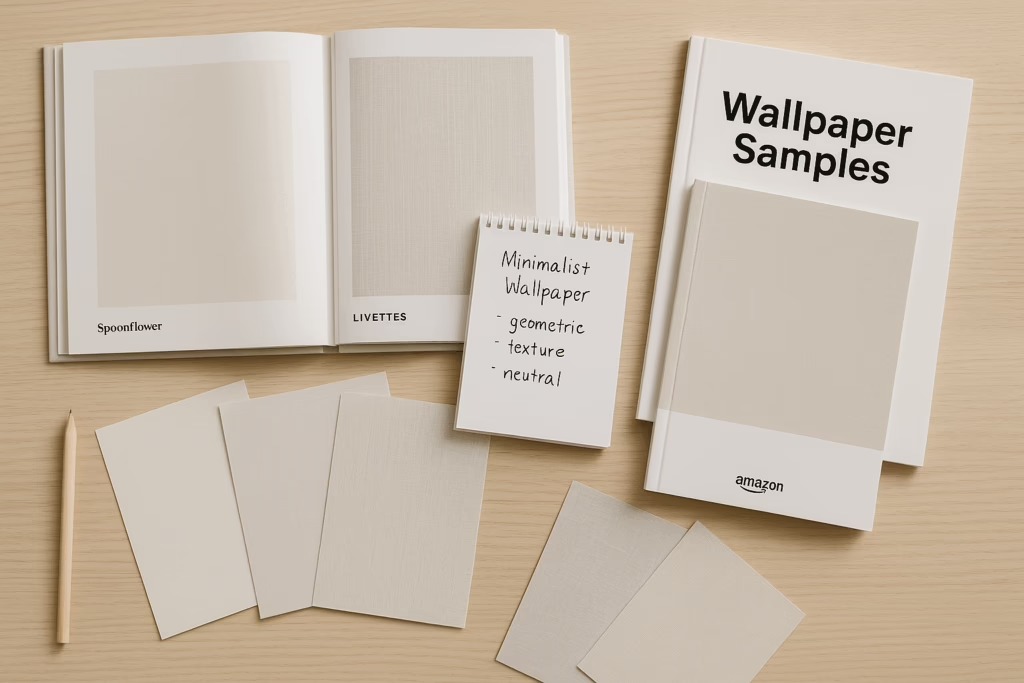
6. Minimalist Wallpaper in Small Spaces
Small spaces benefit the most from thoughtful design—and minimalist wallpaper can completely change how those areas feel. It adds character without adding clutter, making tight spots look more intentional and less like afterthoughts.
The key is to choose wallpaper that enhances openness. Lighter colors like ivory, soft taupe, or pale gray reflect light and create a sense of airiness. Textures like linen, plaster, or smooth wood grain offer depth without bulk. Vertical lines or delicate stripes can elongate a wall, making ceilings appear higher and rooms feel taller.
Try it in unexpected places: an entryway, powder room, or even a closet nook. A subtle wallpaper can turn these overlooked spaces into design moments. For example, a soft geometric pattern in a narrow hallway can give the illusion of movement and width without overwhelming.
If you live in a studio apartment or share a space, minimalist wallpaper can also be used to define zones. A wallpapered wall behind a bed or desk creates a natural boundary, making each area feel separate yet cohesive.
When applying wallpaper in small rooms, avoid busy prints or high-contrast colors. The goal is to make the space feel expansive and calm. A great choice might be something like the Faux Concrete Peel & Stick Wallpaper from Amazon, which adds a clean, modern look without dominating the room.
Minimalist wallpaper doesn’t shout for attention. In small spaces, that quietness is exactly what makes it powerful.
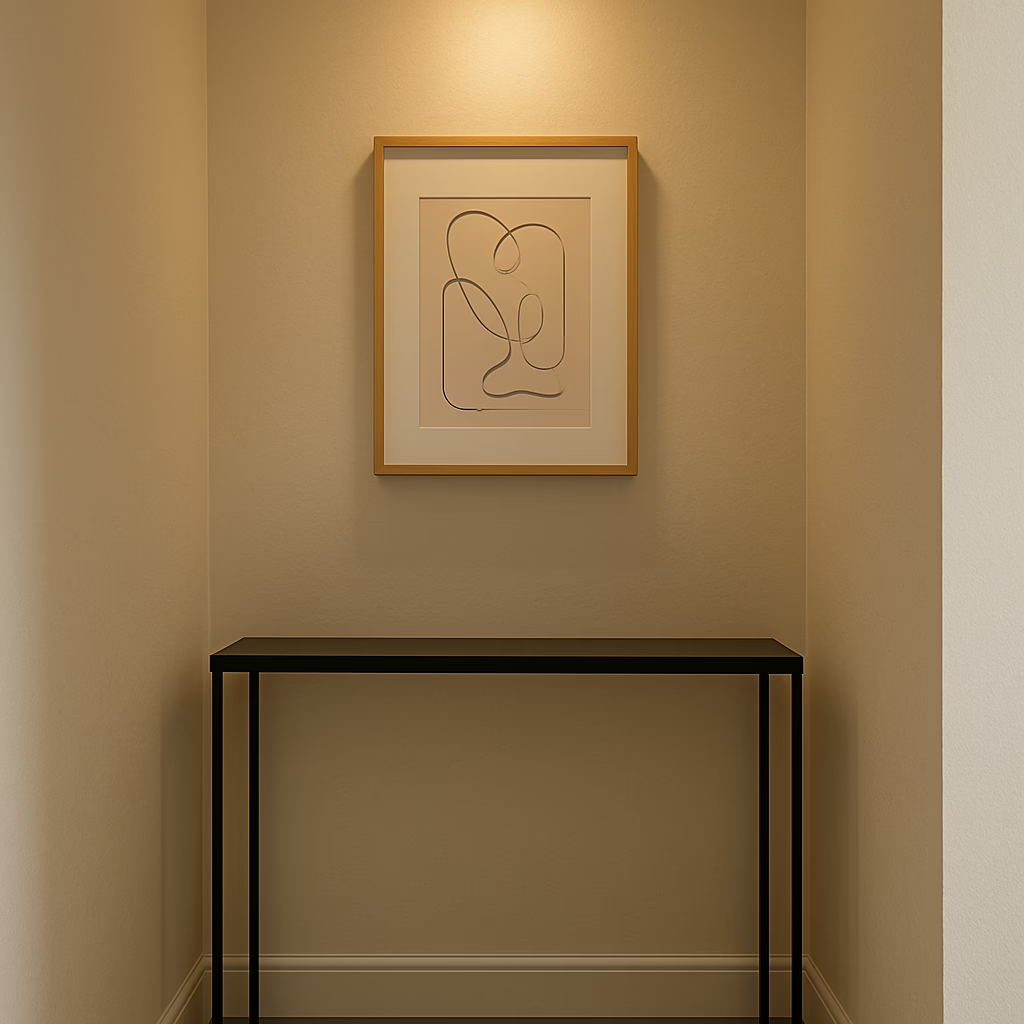
7. Long-Term Care and Removal
Minimalist wallpaper is designed to be low-maintenance, but a little care goes a long way in keeping it looking crisp and fresh. Whether you’ve gone with a textured vinyl or a matte paper finish, routine upkeep is simple.
Dust your wallpaper regularly with a microfiber cloth or soft duster. For spots or smudges, gently wipe with a damp sponge and mild soap—avoid abrasive cleaners that can strip color or damage texture. Always test a small area first if you’re unsure.
If you’ve installed peel-and-stick wallpaper, be mindful of high-humidity areas like bathrooms. While many brands are moisture-resistant, prolonged exposure can loosen adhesive. Consider applying a protective top coat or using wallpaper specifically rated for damp environments.
When it comes time to remove the wallpaper, do it slowly and patiently. Start at a corner and peel gently at a 45-degree angle. Good-quality removable wallpaper should come off cleanly, but if you encounter resistance, use a hairdryer to soften the adhesive. For traditional wallpaper, a wallpaper steamer or solution can help release the glue without damaging the wall underneath.
Some peel-and-stick options are reusable if removed carefully—ideal if you want to redecorate or move. Just save the original backing paper or use wax paper to store the panels flat.
With a bit of maintenance and care, your minimalist wallpaper can remain a calming design element for years. And when you’re ready for a change, removal is simple—no paint, no plaster, no mess.
For removal tips and product recommendations, check out The Spruce’s Wallpaper Removal Guide.
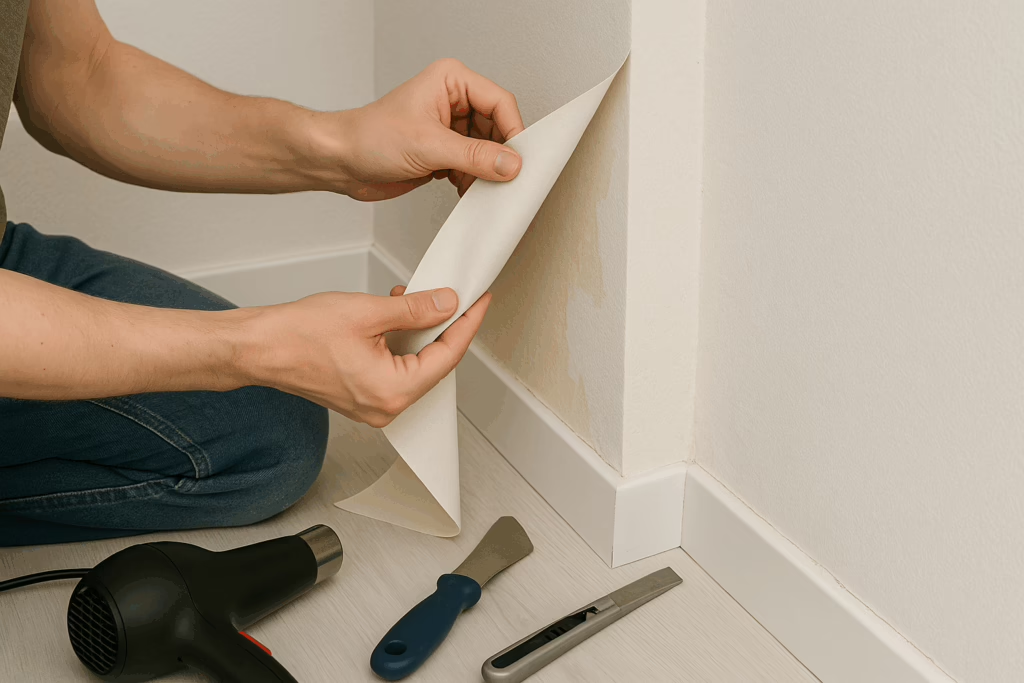
Conclusion
Minimalist wallpaper proves that subtle choices can make a big impact. In a time when our homes double as workplaces, rest zones, and creative studios, it helps carve out calm without demanding attention. With its clean lines, gentle tones, and low-maintenance appeal, minimalist wallpaper is more than decoration—it’s a design philosophy you can live with.
Whether you’re revamping a bedroom wall, defining a reading nook, or simply refreshing a hallway, minimalist wallpaper offers an easy way to add depth and intention to your space. It doesn’t require a major renovation or a massive budget. Just a few rolls and an afternoon can shift how your home feels—and how you feel in it.
Start small. Try a single wall, a tight entryway, or even a closet. As you experiment, you’ll see how less really can be more.
Here are some of the best wallpapers available in Amazon.com
NuWallpaper NUS3145 Grey Cayman Peel & Stick Wallpaper, Neutral

